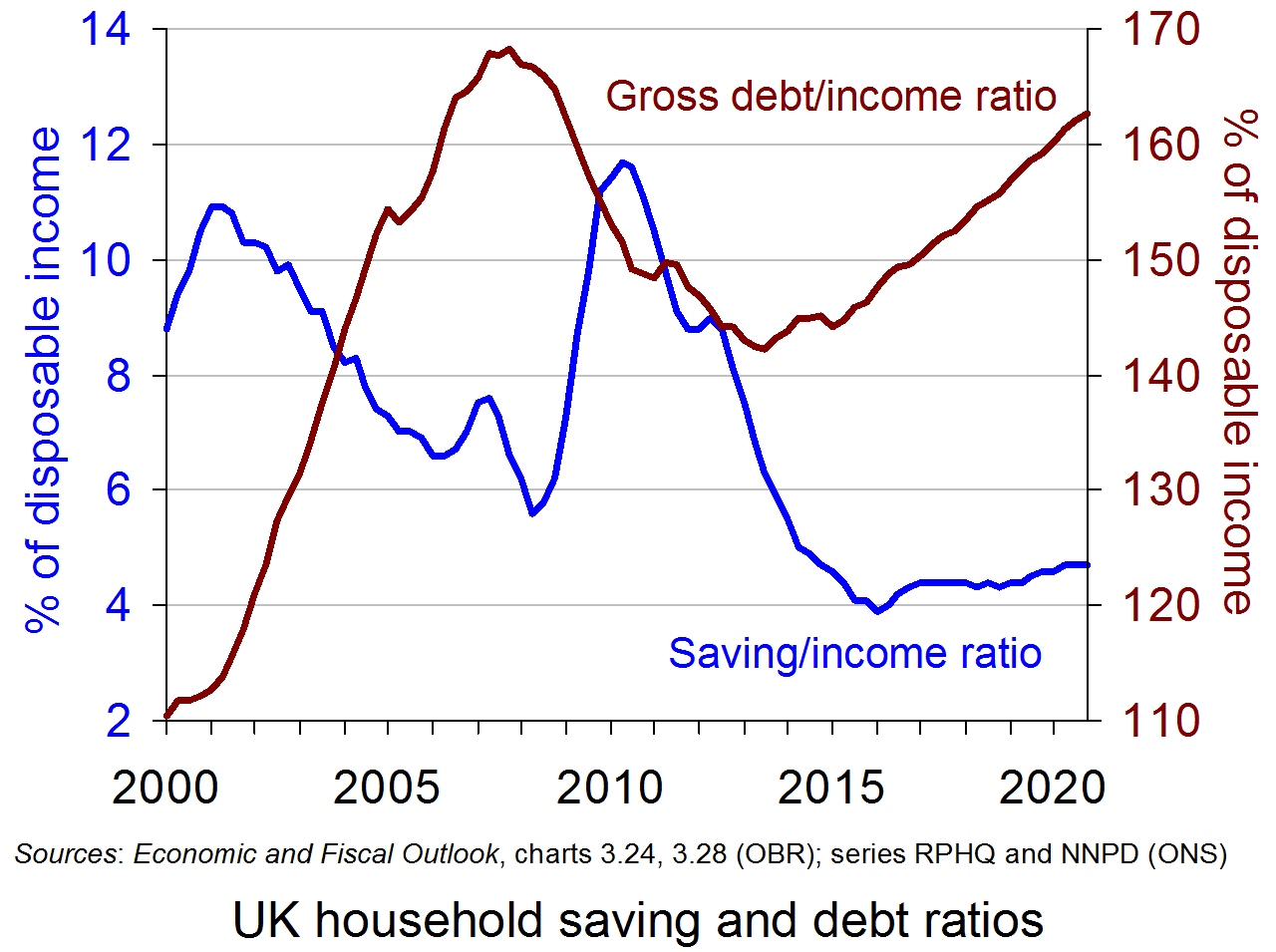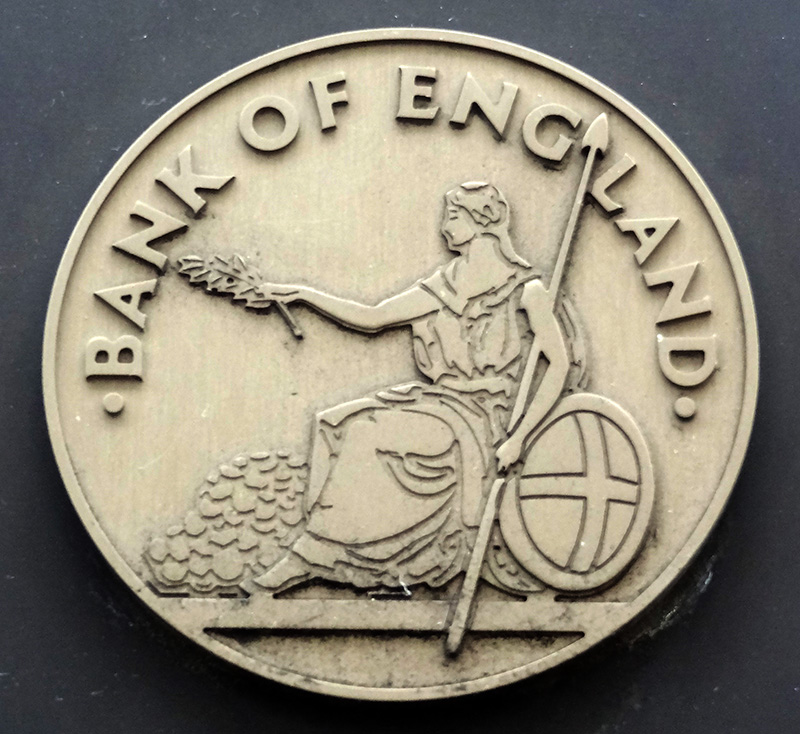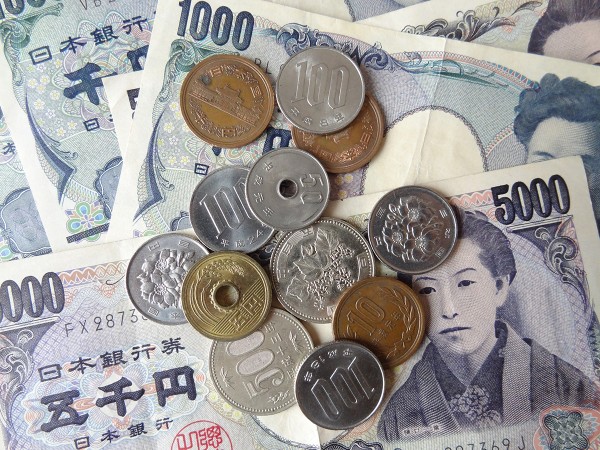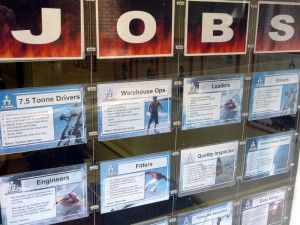 George Osborne in his recent Autumn Statement, once again stressed that ‘the government is committed to strong, sustainable and balanced growth’. But while he plans to reduce government debt as a percentage of GDP, consumer debt is rising, both absolutely and as a percentage of household disposable income. The rise in household borrowing, and the resulting rise in consumer expenditure, has been the main factor driving economic growth. It has not been exports nor, until recently, investment, as the Chancellor had hoped. Indeed, investment in new housing is falling.
George Osborne in his recent Autumn Statement, once again stressed that ‘the government is committed to strong, sustainable and balanced growth’. But while he plans to reduce government debt as a percentage of GDP, consumer debt is rising, both absolutely and as a percentage of household disposable income. The rise in household borrowing, and the resulting rise in consumer expenditure, has been the main factor driving economic growth. It has not been exports nor, until recently, investment, as the Chancellor had hoped. Indeed, investment in new housing is falling.
The Office for Budget Responsibility in its latest Economic and Fiscal Outlook forecasts that gross household debt will reach 163 per cent of household disposable income by 2021, up from 146% at the end of 2015.
Consumer gross debt includes both secured debt and unsecured debt. Secured debt is essentially debt secured on property (i.e. mortgages), while unsecured debt is largely in the form of credit card debt, overdrafts and personal loans.
 The chart shows that from 2008 to 2013, gross debt fell as a percentage of personal disposable income. Following the financial crisis, banks were more cautious about lending as they sought to increase their capital and liquidity ratios. And consumers were more cautious about borrowing as the uncertainty made many people keen to reduce their debts. This decline in credit reversed the massive growth in household debt from 2000 to 2008: one of the contributing factors to the financial crisis. (Click here for a PowerPoint of the chart.)
The chart shows that from 2008 to 2013, gross debt fell as a percentage of personal disposable income. Following the financial crisis, banks were more cautious about lending as they sought to increase their capital and liquidity ratios. And consumers were more cautious about borrowing as the uncertainty made many people keen to reduce their debts. This decline in credit reversed the massive growth in household debt from 2000 to 2008: one of the contributing factors to the financial crisis. (Click here for a PowerPoint of the chart.)
But since late 2013, household debt – both secured and unsecured – has been rising. In absolute (nominal) terms, individuals’ debt is now £1.43 trillion, slightly above the previous high in 2008. And as the chart shows, the OBR forecasts that it will continue rising. This makes consumers more vulnerable to adverse economic shocks, such as a downturn in emerging markets, another crisis in the eurozone or financial crises in other parts of the world.
 And as consumer debt has been rising, the personal saving ratio (the ratio of saving to personal disposable incomes) has been falling and is now lower than before the financial crisis.
And as consumer debt has been rising, the personal saving ratio (the ratio of saving to personal disposable incomes) has been falling and is now lower than before the financial crisis.
The rise in consumer borrowing has been of some concern to the Bank of England. Andy Haldane, the Bank’s Chief Economist, appearing before the Treasury Select Committee, warned that consumer credit, and in particular personal loans, had been ‘picking up at a rate of knots. That ultimately might be an issue that the Financial Policy Committee might want to look at fairly carefully.’
Articles
The UK economy may be growing, but in a highly unbalanced way The Guardian, Phillip Inman (27/11/15)
UK growth hit by biggest drag from net trade on record The Telegraph, Szu Ping Chan (27/11/15)
Surge in consumer lending could prompt Bank of England intervention The Guardian, Patrick Collinson and Jill Treanor (30/11/15)
Consumer spending rise troubles Bank of England The Guardian, Heather Stewart (24/11/15)
Between Debt and the Devil by Adair Turner review – should the government start printing money? The Guardian, Tom Clark (25/11/15)
Lending rises as Bank of England ponders new curbs Financial Times, Ferdinando Giugliano (30/11/15)
Carney indicates BoE’s willingness to rein in credit Financial TImes, Chris Giles (5/11/15)
FCA sounds alarm at rising credit card debt Financial Times, Emma Dunkley (3/11/15)
Interest rates will stay low for longer – but household debt is a worry, says BoE The Telegraph, Szu Ping Chan (24/11/15)
Seven years after the crisis, Britain is still addicted to the drug of debt Independent, James Moore (1/12/15)
Vince Cable: Former Business Secretary warns that ‘severe economic storms’ are on the way Independent, Ben Chu (14/11/15)
The risks stalking the UK economy BBC News, Kamal Ahmed (1/12/15)
OBR publications
Economic and fiscal outlook Office for Budget Responsibility (25/11/15)
Economic and fiscal outlook charts and tables (Excel file) Office for Budget Responsibility (25/11/15)
Questions
- Does it matter if economic growth is driven by a rise in consumer demand, in turn driven by a risen in consumer credit?
- Is there an inflation risk from growth being driven by a rise in consumer credit?
- What is the precise relationship between the household saving ratio and the household debt ratio? (Which of these ratios is a stock and which is a flow?)
- What might cause a fall in consumer borrowing? Would this be a good thing?
- Why did consumer borrowing fall following the financial crisis of 2007–8?
- What could the Bank of England’s Financial Policy Committee do to curb consumer borrowing?
- If banks were forced to hold more reserves, how could aggregate demand be maintained? Would ‘helicopter money’ be a good idea?
- What are ‘countercyclical buffers for banks’? What are the arguments for raising them at the current time?
 At the end of January 2014, we looked at the problem of deflation and in particular at the fortunes of Japan, as its CPI was rising. As the blog explained, the Japanese economy, rather than being plagued by high inflation has been plagued by deflation and many suggest this is even worse.
At the end of January 2014, we looked at the problem of deflation and in particular at the fortunes of Japan, as its CPI was rising. As the blog explained, the Japanese economy, rather than being plagued by high inflation has been plagued by deflation and many suggest this is even worse.
In December 2013, Japan’s core consumer prices were growing faster than expected. The data gave the economy a much needed boost, following increases in government spending aimed at stimulating aggregate demand. This in turn pushed up prices, such that they achieved their fastest rate of growth in 5 years. Now, more recent date from May 2014 shows that the trend has continued. Prices in Japan have now increase at their fastest rate in 23 years, rising 3.2% and beating the forecasts of 3.1%. This means that prices have no risen in Japan for 11 consecutive months. Numerous policies have contributed towards this impressive trend for an economy plagued by deflation for 2 decades. Boosts in the money supply, increases in government spending, a rise in sales tax are just some of the contributing factors.
 Although the economy is certainly over the problem of deflation, some are now concerned that such price rises may reduce consumer spending. An ironic twist, given that barely a year ago the concern about low consumer spending was due to deflation. The next 12 months will be a key indicator of how consumers will respond to this unusual inflation data – after all inflation and high prices have been pretty uncommon. The following articles consider the update on the Japanese economy.
Although the economy is certainly over the problem of deflation, some are now concerned that such price rises may reduce consumer spending. An ironic twist, given that barely a year ago the concern about low consumer spending was due to deflation. The next 12 months will be a key indicator of how consumers will respond to this unusual inflation data – after all inflation and high prices have been pretty uncommon. The following articles consider the update on the Japanese economy.
Japan inflation rate hits 23 year high (including video) BBC News (30/5/14)
Japan April core CPI rises to 23-year high after sales tax rise Reuters (29/5/14)
Japan inflation accelerates Wall Street Journal, Takashi Nakamichi (30/5/14)
Japan’s consumer inflation set to reach five year high The Guardian (18/4/14)
Japan’s inflation at highest rate for 23 years The Telegraph, Rebecca Clancy (30/5/14)
Japan inflation quickens to fastest since 1991 Bloomberg, Toru Fujioka (30/5/14)
Japaense inflation rises at fastest pace in over five years at 1.3% in December 2013 Independent, Russel Lynch (31/1/14)
Questions
- Why is deflation a problem?
- Using an AD/AS diagram, illustrate the problem of expectations and how this contributes to stagnant growth.
- Japanese policies have helped create a rise in the CPI. Which policies have been effective in creating rising prices?
- Explain how the sales tax has contributed towards higher prices.
- With prices rising, there are now concerned that consumer spending may decline. Using a diagram, explain why this may be the case.
- In the previous blog, we analysed the Indian economy and said that high inflation was something that was contributing towards lower growth. How is that low inflation or deflation can also contribute towards low growth?
 Rising inflation: not normally a cause for celebration, but that’s not the case for Japan. Having been subject to the spectre of deflation for many years, the 22-year high for the CPI at 2.7% is a welcome figure, even it is slightly lower than expected. This surge in prices is partly the result of a growth in domestic demand and a sign, therefore, that output will expand in response to the rise in demand.
Rising inflation: not normally a cause for celebration, but that’s not the case for Japan. Having been subject to the spectre of deflation for many years, the 22-year high for the CPI at 2.7% is a welcome figure, even it is slightly lower than expected. This surge in prices is partly the result of a growth in domestic demand and a sign, therefore, that output will expand in response to the rise in demand.
The Japanese economy has experienced largely stagnant growth for two decades and a key cause has been falling prices. Although consumers like bargains, this has been problematic for this large economy. Deflation creates continuously falling prices and this means consumers hold back from purchasing durable goods, preferring to wait until prices have fallen further.

In the blog, Japan’s recovery, we looked at inflation data showing Japanese consumer prices growing at a faster rate than expected. This ‘positive’ trend has continued.
When it comes to inflation, expectations are crucial. If people think prices will rise in the future, they are more likely to buy now to get the lower price. This can therefore help to stimulate aggregate demand and it is this that has been the target for Japan. Part of the growth in the CPI is down to the sales tax rise from 5% to 8%. This was the first time in 17 years that the sales tax had increased. Further increases in it are expected in 2015. There were concerns about the impact of this rise, based on the depression that followed the last rise back in 1997, but so far the signs seem good.
Monetary easing was a key component in ending the downward trajectory of the Japanese economy and, following the sales tax rise, many believe that another round of monetary easing may be needed to counter the effects and create further growth in the economy and in the CPI. As the Bank of Japan Governor said:
There are various ways to adjust policy. We will decide what among these measures is appropriate depending on economic and price developments at the time … For now, we can say Japan is making steady progress toward achieving 2 per cent inflation.
One of the ‘three arrows‘ of the government’s policy has been to boost government spending, which should directly increase aggregate demand. Furthermore, with signs of the CPI rising, consumers may be encouraged to spend more, giving a much needed boost to consumption. The economy is certainly not out of the woods, but appears to be on the right path. The following articles consider the Japanese economy.
Japan CPI rises less than expected Wall Street Journal, Takashi Nakamichi (25/4/14)
Japan inflation may beat BOJ forecast Reuters, Leika Kihara (22/4/14)
Tokyo consumer price growth at 22-year high BBC News (25/4/14)
Japan inflation quickens to over 5-year high, output rebounds Reuters, Leika Kihara and Stanley White (31/1/14)
Japan’s consumer inflation set to reach five-year high Guardian (18/4/14)
Tokyo inflation hits 22-year high, inching toward BOJ goal Reuters, Tetsushi Kajimoto and Leika Kihara (25/4/14)
Tokyo’s core CPI got 2.7% lift in April from tax hike The Japan Times (25/4/14)
Is Japan winning the war against deflation? CNBC, Ansuya Harjani (25/4/14)
Questions
- Why is deflation a problem?
- Using an AD/AS diagram, illustrate the problem of expectations and how this contributes to stagnant growth.
- Use the same diagram to explain how expectations of rising prices can help to boost AD.
- Why is the sales tax expected to reduce growth?
- Why is another round of monetary easing expected?
- What government policies would you recommend to a government faced with stagnant growth and falling prices?
 Unemployment figures for the UK have been going in the wrong direction for some time. With consumer expenditure, investment and hence aggregate demand remaining low, job creation has been severely lacking. However, 2 pieces of news have emerged in the last couple of days, which as David Cameron said was ‘a massive confidence boost for the UK economy’. Tesco and Nissan have both announced the creation of thousands of new jobs.
Unemployment figures for the UK have been going in the wrong direction for some time. With consumer expenditure, investment and hence aggregate demand remaining low, job creation has been severely lacking. However, 2 pieces of news have emerged in the last couple of days, which as David Cameron said was ‘a massive confidence boost for the UK economy’. Tesco and Nissan have both announced the creation of thousands of new jobs.
Over the next 2 years, Tesco has said that it will create 20,000 new jobs through store improvement and the opening of new stores. Whilst it is not clear how many will be full-time, part-time or apprenticeship placements, it still represents net job creation. This huge investment represents what many are calling a ‘fight-back’ from Tesco, who issued its first profit warning in 20 years, following weak Christmas trading. That announcement slashed their shares by over £5bn and is perhaps partly responsible for this planned investment.
Despite this good news, criticisms have emerged that the major supermarkets are simply inflating the job creation figures and that the actual number of new jobs will be significantly less than the 20,000 suggested. This follows allegations made towards Asda, who claimed to have created 30,000 jobs. However, evidence from records at Companies House suggests that new job creation by the company was closer to 7,000. Whatever the true figure, it still means new jobs, which can only help UK unemployment data.
In addition to this, Nissan has also announced that it will be creating 2,000 new jobs, as it begins production on a new model at its Sunderland factory. The jobs will be created as part of a £125m investment, including a £9.3m grant from the government. This is especially good news, given the area where many of these jobs will emerge. The North East is a region that has been hit particularly hard by the recession and the grant from the government has come from its regional growth fund. Nissan has said that even in hard economic times, it is possible to sell cars, as long as they are competitively priced. Neither of the plans discussed above will create jobs immediately, but perhaps the key is that it creates confidence, which is a rarity in the UK with the current economic situation. The following articles consider these job creation plans and their wider implications.
Tesco plans to create 20,000 UK jobs over 2 years BBC News (5/3/12)
Tesco to create 20,000 jobs in UK fight-back Telegraph, Jamie Dunkley (6/3/12)
Tesco’s UK boss defends ‘new jobs’ claims Sky News (5/3/12)
Tesco to freshen up with 20,000 new staff Financial Times, Andrea Felsted (5/3/12)
Now Tesco creates 20,000 jobs – with pay Independent (9/5/11)
Nissan to build new car in Sunderland BBC News (6/3/12)
Nissan pledges 2,000 new jobs at North East plant Sky News, Gerard Tubb (6/3/12)
Nissan Invitation compact car set to create 2,000 jobs Telegraph, Roland Gribben and David Millward (6/3/12)
Nissan to create 2,000 new jobs by building compact car in Sunderland Guardian, Dan Milmo(6/3/12)
Questions
- Explain the process by which net job creation should provide a boost to the economy.
- Will these new jobs have any impact on the government’s budget deficit?
- Why is there concern that the supermarkets are inflating the employment creation figures?
- What type of unemployment has been created by the recession? Why have certain areas, such as the North East been affected so badly by the recession and austerity measures?
- Which factors could have led to Tesco’s weaker trading figures towards then end of 2011? Why did this lead to a £5bn loss in the value of the group’s shares?
- Nissan has said that cars can be sold as long as they are competitively priced. To what extent do you think price is the main competitive weapon in the market for cars and in the supermarket industry?
 George Osborne in his recent Autumn Statement, once again stressed that ‘the government is committed to strong, sustainable and balanced growth’. But while he plans to reduce government debt as a percentage of GDP, consumer debt is rising, both absolutely and as a percentage of household disposable income. The rise in household borrowing, and the resulting rise in consumer expenditure, has been the main factor driving economic growth. It has not been exports nor, until recently, investment, as the Chancellor had hoped. Indeed, investment in new housing is falling.
George Osborne in his recent Autumn Statement, once again stressed that ‘the government is committed to strong, sustainable and balanced growth’. But while he plans to reduce government debt as a percentage of GDP, consumer debt is rising, both absolutely and as a percentage of household disposable income. The rise in household borrowing, and the resulting rise in consumer expenditure, has been the main factor driving economic growth. It has not been exports nor, until recently, investment, as the Chancellor had hoped. Indeed, investment in new housing is falling. The chart shows that from 2008 to 2013, gross debt fell as a percentage of personal disposable income. Following the financial crisis, banks were more cautious about lending as they sought to increase their capital and liquidity ratios. And consumers were more cautious about borrowing as the uncertainty made many people keen to reduce their debts. This decline in credit reversed the massive growth in household debt from 2000 to 2008: one of the contributing factors to the financial crisis. (Click here for a PowerPoint of the chart.)
The chart shows that from 2008 to 2013, gross debt fell as a percentage of personal disposable income. Following the financial crisis, banks were more cautious about lending as they sought to increase their capital and liquidity ratios. And consumers were more cautious about borrowing as the uncertainty made many people keen to reduce their debts. This decline in credit reversed the massive growth in household debt from 2000 to 2008: one of the contributing factors to the financial crisis. (Click here for a PowerPoint of the chart.) And as consumer debt has been rising, the personal saving ratio (the ratio of saving to personal disposable incomes) has been falling and is now lower than before the financial crisis.
And as consumer debt has been rising, the personal saving ratio (the ratio of saving to personal disposable incomes) has been falling and is now lower than before the financial crisis.


